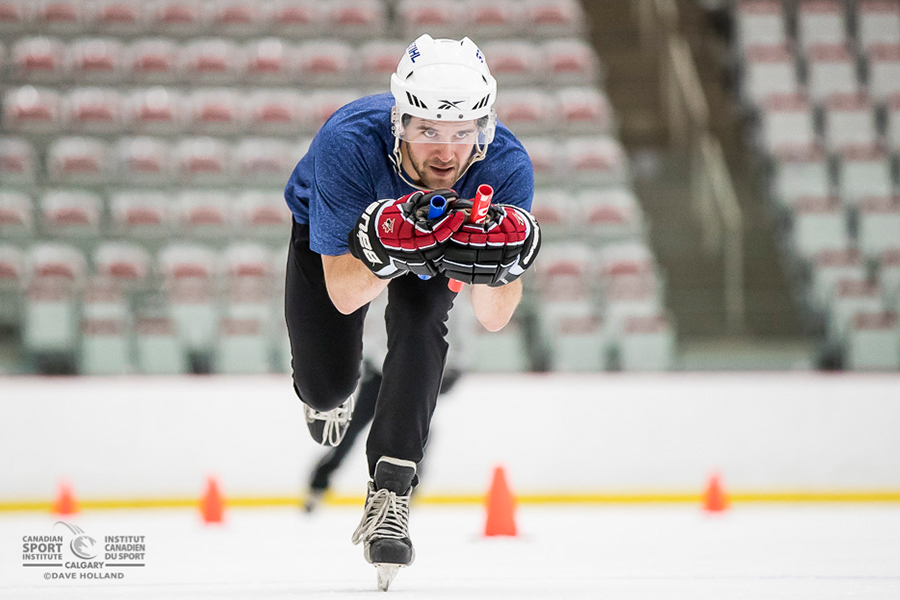
Imagine that you are world-class alpine skier. Every year you get about sixty days of training on snow, where you fit in up to six runs a day of about 60-90 seconds each. That’s roughly six to ten minutes a day of skiing over sixty days. Doesn’t sound like much, does it?
But when you factor in the logistics, coordination, early wake-ups, travel and endless transporting of gear, those six runs add up to one very big, long day.
According to Matt Jordan, Director of Strength and Conditioning at CSI Calgary, training for alpine skiing is not the same as most other sports. “The days are long with a lot of logistics and travel, which can be very fatiguing. Skiers get tired in a very different way than the average athlete,” he explains.
That is why, when the alpine team centralizes for a month-long training camp every summer at CSI Calgary, they put in incredibly long, challenging and diverse days of training. “With this camp, we are trying to set them up with big, long days of training with a variety of activities to develop their work capacity to handle the demands of the sport,” says Jordan.
This is the sixth camp for Phil Brown, 25, a slalom skier and team veteran. He says he enjoys his time in Calgary every year. “There are long days and it’s very focused. But everybody here has bought in and are really excited about what we have going; there is a positive vibe.”
In addition to a lot of mornings in the gym weightlifting, there are on-ice edge and gliding sessions to practice slalom turns and outdoor field workouts focused on jumping, landing and general strength.
Perhaps the most unusual session is the one in the boxing ring. Every Thursday afternoon the team takes to throwing punches instead of carving turns. The goal is to learn skills that transfer to skiing, like eye-hand coordination, but where fitness improves too. “It’s a layered workout where physiological goals are met and the skill development is tied in,” says Jordan.
Add in aerobic power workouts on track bikes at the velodrome and you have several weeks of some very diverse training. “We are pushing them in different ways,” adds Jordan. For Brown, the training is great but it’s enjoyable too. “It’s not fun to be in the gym all the time so we’ve been incorporating a lot of different activities in the afternoon sessions, which help keep the atmosphere lighter,” he says.
All of these activities develop skills that skiers rely on when they are training and racing on snow. “The idea is to foster their ability to take in environmental information, process it and generate a motor response,” explains Jordan. “This will help them on the hill where conditions are always changing and they have to react appropriately.”
The overriding goal of the camp is to ensure the athletes understand that their performance is triangulated, where the coach, strength team, para-medical team and all other support staff are working together to find as many benefits they can to help the athlete perform. Ultimately this gives the athletes confidence that they are prepared for the season.
Preparation is key, and so is staying healthy. Jordan says that because alpine skiing is such a high-risk sport they also focus on training that will help them be fit, strong and able to move in a safe way to help avoid injury. “After a camp like this they feel like they are better athletes.”
Canadian Sport Institute Calgary: @csicalgary
Written by Kristina Groves: @kngrover
Photo by: Dave Holland @csicalgaryphoto
28/06/17
